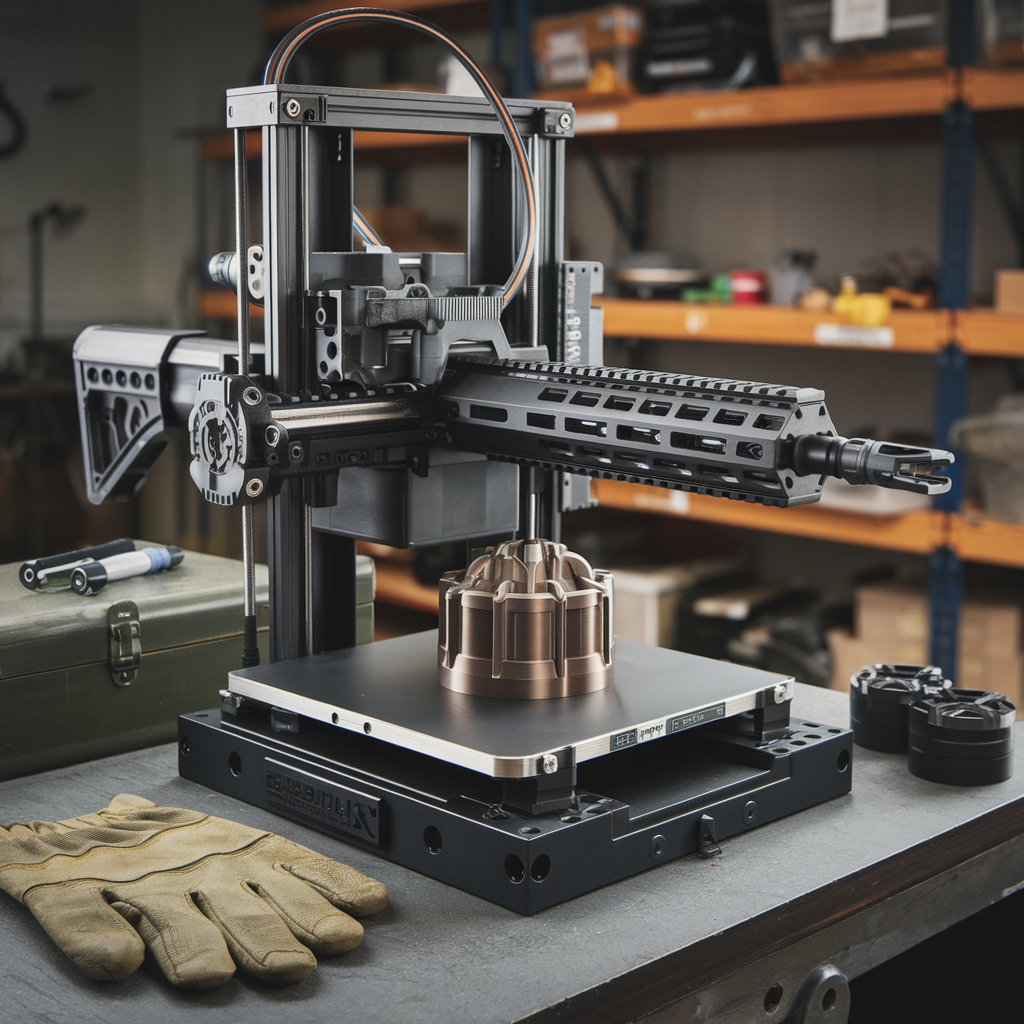The Impact of 3D Printing on Firearm Manufacturing and Legislation

Advancements in 3D printing technology have disrupted various industries, and firearm manufacturing is no exception. With growing accessibility and affordability, 3D printing has introduced new possibilities for gun enthusiasts and raised significant questions about legislation and safety. This article explores how 3D printing is impacting firearm production, the implications for laws, and what this means for responsible gun ownership.
Understanding 3D Printing in Firearm Manufacturing
3D printing, or additive manufacturing, allows the creation of objects layer by layer based on a digital model. For firearms, this means enthusiasts can produce components or full firearms at home using widely available blueprints and materials. While firearms created this way are often referred to as “ghost guns” due to their lack of serial numbers, not all 3D-printed firearms are untraceable or illegal.
The versatility of 3D printing is one of its biggest draws. Gun owners can create customized parts, repair existing firearms, or experiment with designs without relying solely on commercial manufacturers.
Commonly Printed Firearm Components
- Frames: Often the most common part made through 3D printing, frames house other components and are considered the firearm’s “core.” Printing these at home can bypass traditional regulatory hurdles.
- Lower Receivers: A crucial part of many guns, lower receivers are regulated under federal law. 3D printing allows users to produce them privately.
- Accessories: Parts like grips, stocks, and magazine holders are easily made with 3D printing and allow for simple customization.
These applications demonstrate both the benefits and risks of 3D printing for firearms. For hobbyists, the technology provides flexibility and creativity. However, it also opens doors for misuse, which is a growing concern for lawmakers and safety advocates.
The Legal Perspective: Navigating 3D Printing and Gun Laws
The rise of 3D-printed firearms has sparked debates surrounding Second Amendment rights, public safety, and regulatory gaps. In the United States, the legality of producing firearms for personal use varies but generally does not require a license as long as the guns are not sold or distributed.
Key Legal Issues
- Serialization: Federal law mandates that commercially manufactured firearms come with serial numbers. 3D-printed firearms often lack serialization, making them difficult to trace and regulate.
- Blueprint Sharing: Online sharing of 3D firearm blueprints has drawn legal challenges. Some argue that this activity violates arms export laws, while others see it as a free speech issue.
- Undetectable Firearms: Federal legislation prohibits the manufacture of undetectable firearms, such as all-plastic guns that bypass metal detectors. Ensuring compliance with this law is a challenge given the private nature of 3D printing.
Lawmakers at state and federal levels continue discussing how to address these challenges. Proposed solutions include stricter regulations on 3D printing materials, licensing requirements for blueprint creators, and mandatory serialization.
3D Printing and the Second Amendment
For gun rights advocates, 3D printing represents an expansion of Second Amendment freedoms, allowing individuals to create firearms without government oversight. Opponents worry that these advancements undermine existing safety measures and enforcement capabilities.
The balance between personal freedom and public safety remains at the heart of this issue. While the technology empowers responsible gun owners, it also poses risks if exploited improperly.
Practical Concerns for Firearm Enthusiasts
As exciting as 3D printing may seem, it is not without its challenges. For home users, there are practical considerations that impact the effectiveness and safety of 3D-printed firearms.
Material and Durability Challenges
- Material Limitations: Many 3D printers use plastic, which has a lower tolerance for pressure and heat compared to metal. This limits its use for essential firearm components, such as barrels or firing pins.
- Durability: Plastic parts are prone to wear and may not hold up to repeated use. Hybrid approaches, combining 3D-printed parts with commercially manufactured components, are often more practical.
These challenges mean that 3D printing firearms is most suitable for hobbyists or experimental use rather than serious applications like hunting or personal defense.
Safety and Liability
Responsible gun ownership includes ensuring the safety and reliability of firearms. Users should test 3D-printed components thoroughly before integrating them into functional weapons. Misfires or malfunctions are potential risks if printed parts fail under pressure. Additionally, gun owners must consider the legal risks associated with creating unregistered or prohibited items.
Future Trends in 3D-Printed Firearms
As technology evolves, the capabilities of 3D printing will continue to expand. Improved materials, faster printing speeds, and greater accuracy will make it easier to produce functional firearms at home. However, advancements may also push legislators to adapt more stringent laws to address emerging challenges.
Anticipated Developments
- Metal Printing Accessibility: Metal 3D printers are cost-prohibitive for now, but their eventual affordability will redefine what can be printed at home.
- Regulatory Updates: Governments may establish clearer guidelines for the private manufacture and use of firearms through 3D printing.
- Community Innovation: Just as the online firearm community has embraced blueprints and DIY gunsmithing, 3D printing will continue to fuel innovation among gun enthusiasts.
Whether these advancements bring exciting opportunities or heightened scrutiny remains to be seen. Gun owners should stay informed about both the technology and their local laws to ensure responsible usage.
Conclusion
The impact of 3D printing on firearm manufacturing and legislation is both far-reaching and nuanced. While the technology offers hobbyists unparalleled creative freedom, it also introduces legal and safety concerns that challenge the status quo. For firearm enthusiasts, embracing 3D printing responsibly can open new doors, but understanding the potential risks and regulations is critical.
The future of 3D-printed firearms is likely to evolve alongside the broader discussion of gun rights and public safety. Staying informed, adaptable, and respectful of laws will ensure that gun owners can confidently enjoy this exciting technological frontier.
For more insights on firearm trends and news, visit our other articles on 2AGun.com.



